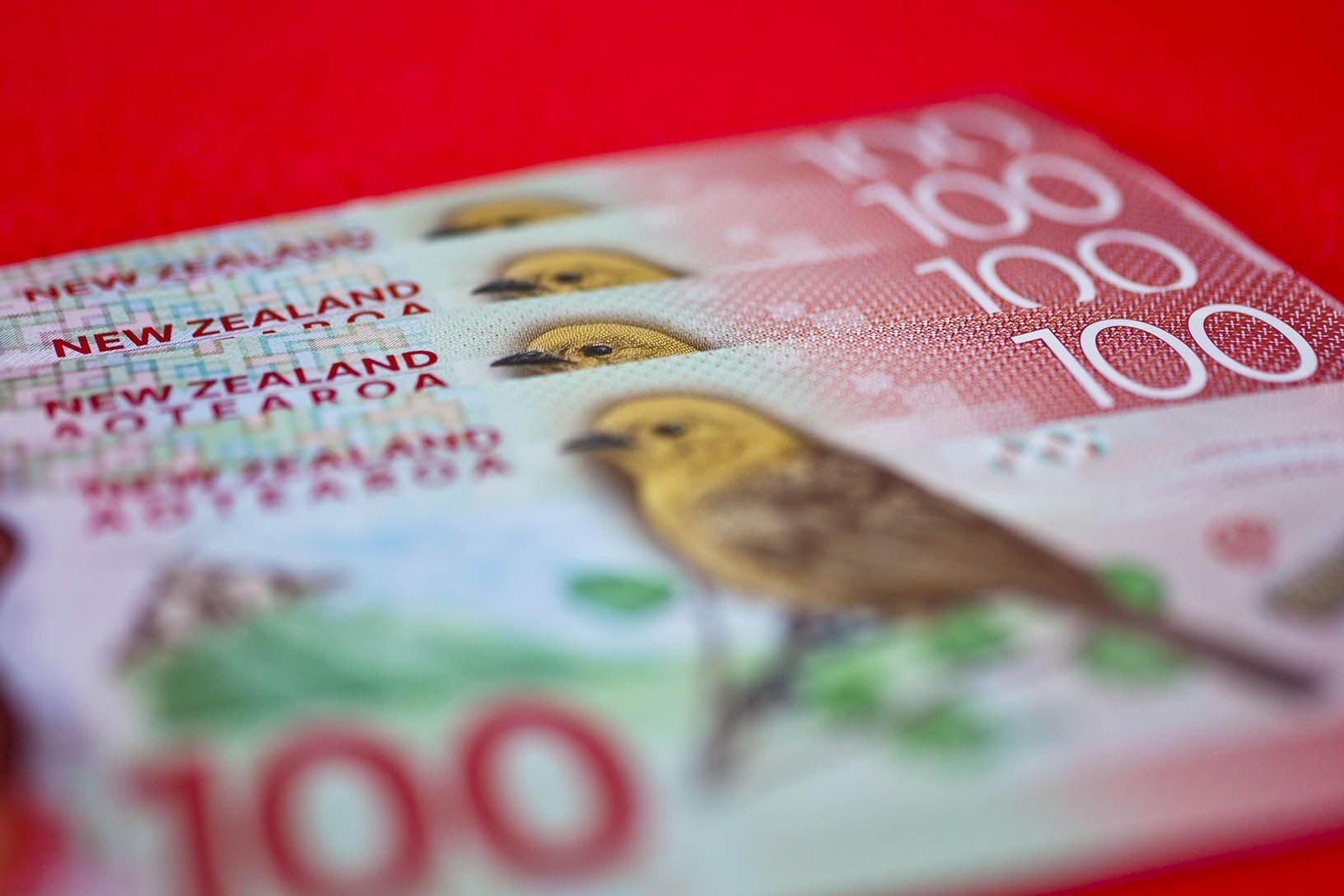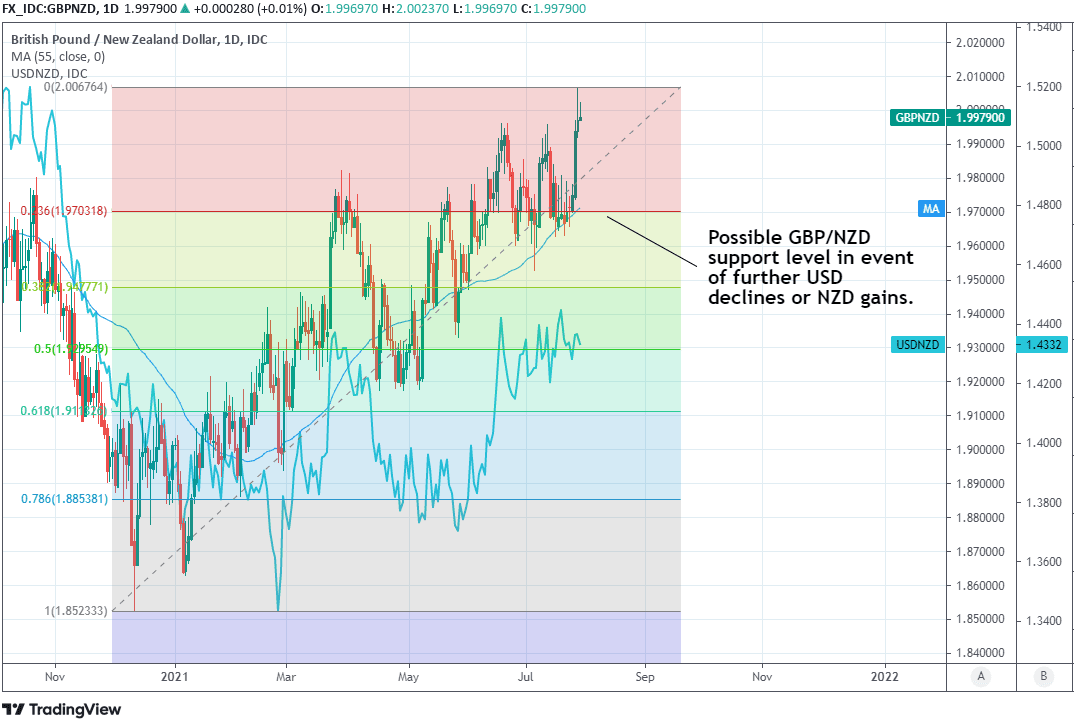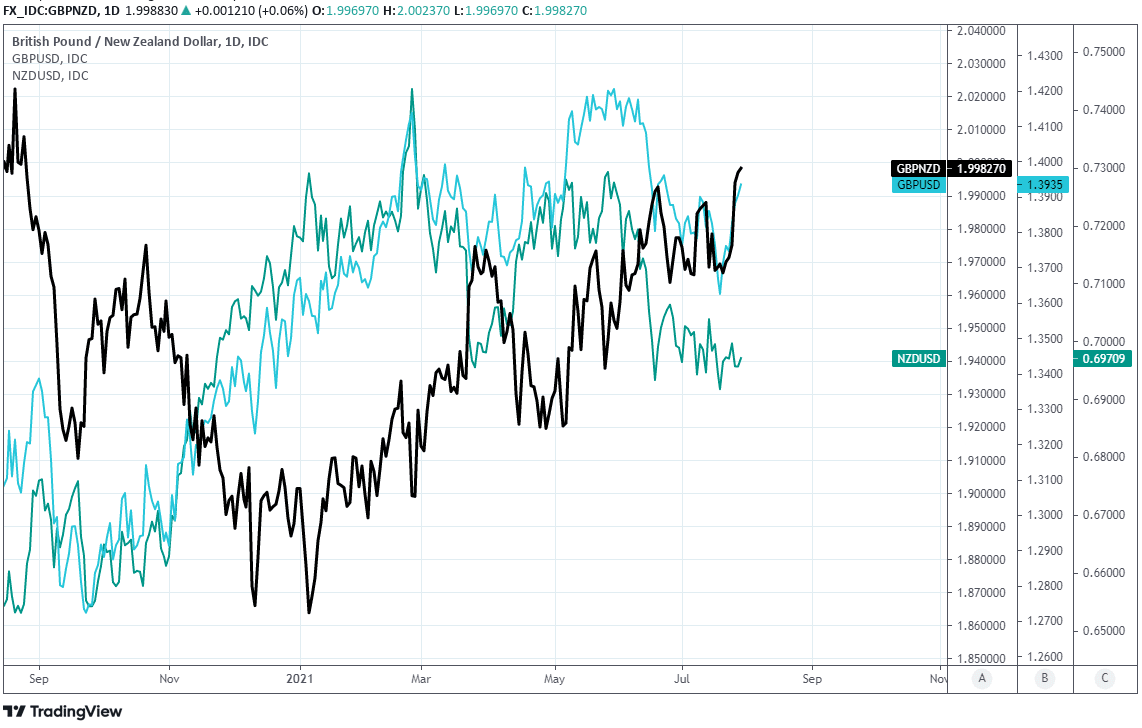Pound-New Zealand Dollar Rate Chews Away at Two-for-One Level
- Written by: James Skinner
- GBP/NZD chewing at 2.00 following demand for GBP
- But gains may fade if USD’s post-Fed decline endures
- Downside limited to 1.97 amid risks to RBNZ outlook
- Asia volatility & China uncertainty also weighs on NZD

Image © Adobe Stock
- GBP/NZD reference rates at publication:
- Spot: 1.9972
- Bank transfers (indicative guide): 1.9273-1.9413
- Money transfer specialist rates (indicative): 1.9792-1.9832
- More information on securing specialist rates, here
- Set up an exchange rate alert, here
The Pound-to-New Zealand Dollar exchange rate could be on the cusp of sustaining a move above the nearby two-for-one level and may be aided in this endeavour by risks to now-lofty expectations of the Reserve Bank of New Zealand (RBNZ).
Sterling has experienced a flurry of demand this week which was ongoing on Thursday and had briefly lifted the Pound-to-New Zealand Dollar exchange rate above the two-for-one level previously on Wednesday only for a tentative bounce by the Kiwi to then pull it back below the threshold overnight.
New Zealand Dollar gains came despite an overnight decline in the ANZ barometer of business confidence and appeared more than anything to be derived from losses in the U.S. Dollar, which GBP/NZD has had positive correlation with of late.
"The tapering of bond purchases is coming, but not yet, and the Fed still sees higher inflation as being transitory. Against that backdrop it may be difficult for the NZ market to continue to price in such lofty expectations, posing downside NZD risks,” says David Croy, a strategist at ANZ.
"NZD/GBP hit a new low for the year below 0.50, is technically very weak; and the well-formed 2021 downtrend channel remains very much intact," Croy writes in a Thursday note to clients.
U.S. Dollar losses followed July’s Federal Reserve policy decision which revealed a possibly months-long mismatch between when markets expected the American policymakers to announce plans to begin winding down their quantitative easing programme, and when the Fed may eventually do so.
Above: Pound-to-New Zealand Dollar rate shown at daily intervals with Fibonacci retracements of 2021 rally, 55-day average and USD/NZD rate.
Secure a retail exchange rate that is between 3-5% stronger than offered by leading banks, learn more.
“From an FX point of view, a no rush to judgment from Powell should be reassuring for risk sentiment and hence for currencies where hawkish central bank pricing exists. This includes the NZD, CAD and NOK, all of which are top of the list in terms of moving towards the exit,” says Mazen Issa, a senior FX strategist at TD Securities.
GBP/NZD’s recently positive correlation with the USD/NZD rate means there’s a chance, even if only marginal, that a continuation of nascent declines in U.S. exchange rates could potentially hamper Sterling’s advance against the Kiwi.
However, the Pound-to-New Zealand Dollar rate does have the benefit of a double-barreled support level around 1.97 that could potentially arrest any such declines, which coincides closely with its 55-day moving-average at 1.9711 and the 23.8% Fibonacci retracement of the 2021 rally at 1.9703.
“Although business confidence fell in July, gauges of businesses’ own activity continued to hold firm above pre-Covid levels. This again highlights the strength of economic conditions in 2021,” says Gregorius Steven, an economist at Westpac.
“Underlying gauges of business activity also held firm and are back around their long run averages. Employment and investment intentions remain strong, consistent with an economy that is sustaining strong demand,” Steven says.
ANZ’s barometer of Kiwi business confidence softened from -0.6% to -3.8% during the overnight hours with most of the various component indicators of activity softening from June’s levels, with materials and other input cost pressures being the most cited headwind.
{wbamp-hide start}
{wbamp-hide end}{wbamp-show start}{wbamp-show end}
“Our ASB colleagues expect the RBNZ to start raising the official cash rate from its next meeting on 18 August,” says Kim Mundy, a strategist at Commonwealth Bank of Australia.
Rising cost pressures saw inflation expectations rise to 2.77% and their highest level since 2012, leading ANZ to warn they could soon rise above the top of the RBNZ’s 1%-to-3% target range, which would do little to cool market expectations that Kiwi interest rates could soon begin to rise.
Some analysts including those at ANZ have, however, cited Wednesday’s Federal Reserve decision as something which could potentially lead the RBNZ to hold off on raising its cash rate, which would be a disappointment for the market and could potentially weigh on the Kiwi.
New Zealand’s Dollar was on Thursday the worst performer for the week within the G10 segment of major currencies following price action that may have had to do with earlier turbulence in Asia Pacific financial markets emanating from China.
“NZD could be one of the more vulnerable currencies in G10 FX to any significant widening of regional contagion in Asia,” says John Hardy, head of FX strategy at Saxo Bank.
“While NZD rates are so far unfazed, the “beta risk” is greater on a general change of mood on the global forward outlook than perhaps any other G10 currencies. Among regional comparisons, AUDNZD is also interesting to watch for the same reason,” Hardy adds.
Above: GBP/NZD shown at daily intervals with GBP/USD and NZD/USD.







